Discover the secrets to keeping your Monstera Deliciosa, or Swiss cheese plant, thriving with this comprehensive care guide. Learn about its unique needs, from watering and light requirements to pruning and repotting, and embrace the beauty of this trendy, low-maintenance houseplant.
How to Take Care of Monstera, the Swiss Cheese Plant

In recent years, the Monstera deliciosa, commonly known as the Swiss cheese plant, has taken the houseplant world by storm. With its distinctive, perforated leaves and trailing vines, this tropical beauty adds a touch of lush greenery and eye-catching appeal to any indoor space. However, despite its popularity, many plant parents struggle to keep their Monstera thriving. Fear not! In this comprehensive guide, we’ll dive into the essentials of Monstera care, ensuring your leafy companion remains healthy, happy, and as stunning as the day you brought it home.
Understanding the Monstera Deliciosa
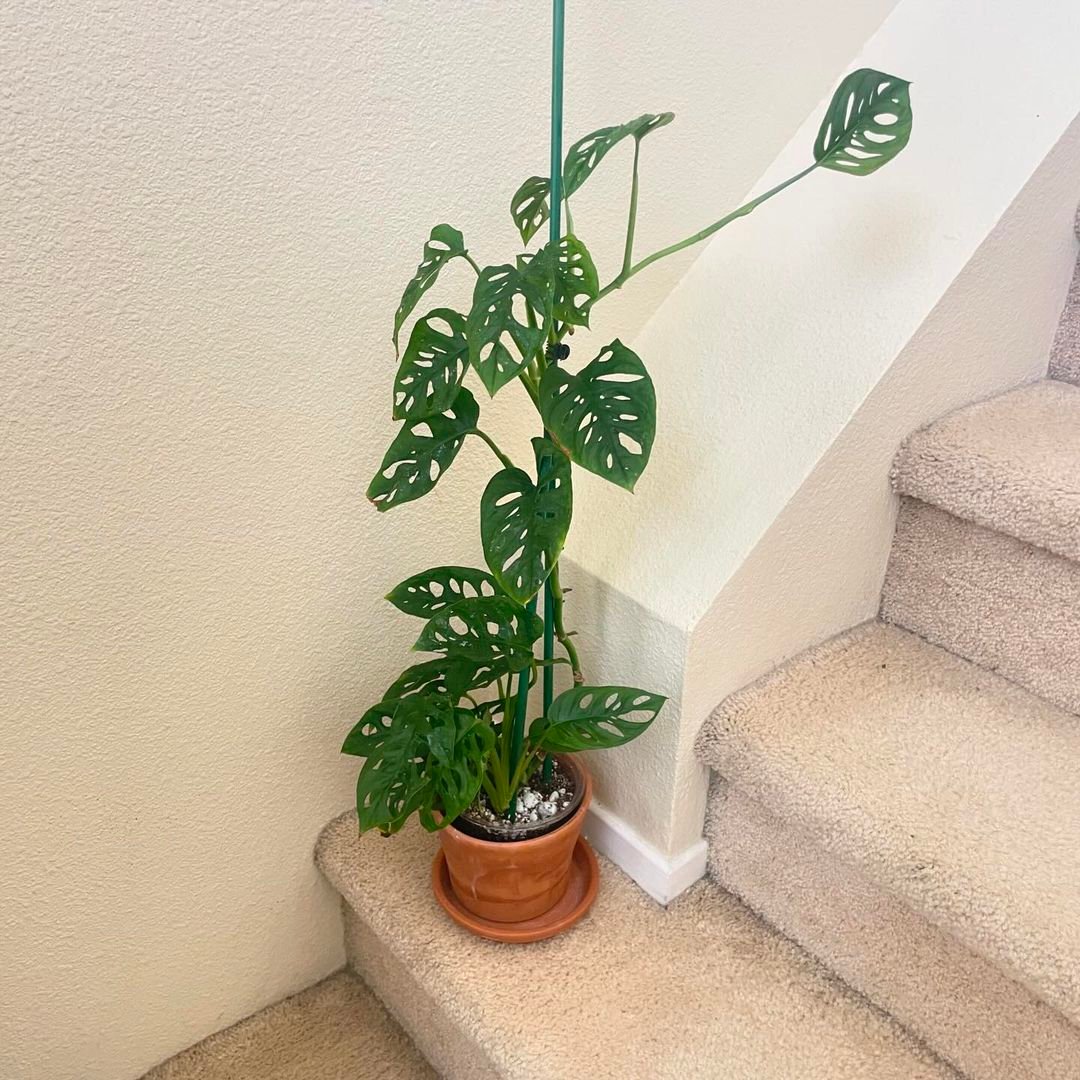
Before we delve into the specifics of care, let’s take a moment to appreciate the unique characteristics of the Monstera deliciosa. Native to the tropical rainforests of Central America, this plant is an evergreen, climbing vine that can grow up to 20 feet tall in its natural habitat. Its iconic, perforated leaves, often referred to as “Swiss cheese leaves,” are a result of a natural process called fenestration, which allows the plant to capture more sunlight and withstand strong winds.
Monstera Care Essentials

Light Requirements
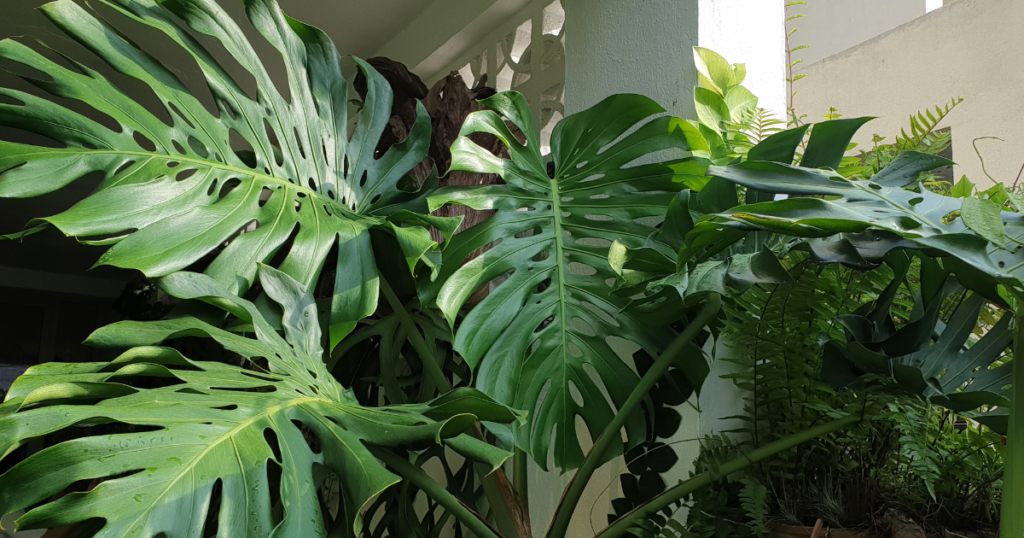
Monsteras thrive in bright, indirect light. While they can tolerate some direct sunlight, too much exposure can cause their leaves to burn or develop unsightly brown spots. Aim to place your Monstera near an east or west-facing window, or use sheer curtains to filter the light if it’s in a south-facing spot.
Watering

Proper watering is crucial for a happy Monstera. These plants prefer their soil to dry out slightly between waterings, but they don’t tolerate prolonged drought. Check the soil moisture regularly by sticking your finger into the potting mix up to the second knuckle. If the soil feels dry, it’s time to water thoroughly until excess moisture drains from the bottom of the pot.
Humidity
As tropical plants, Monsteras appreciate higher humidity levels, ideally between 40-60%. If your home’s air is dry, consider using a humidifier or placing your plant on a pebble tray filled with water. You can also mist the leaves occasionally, but be cautious of standing water, which can lead to fungal issues.
Soil and Potting
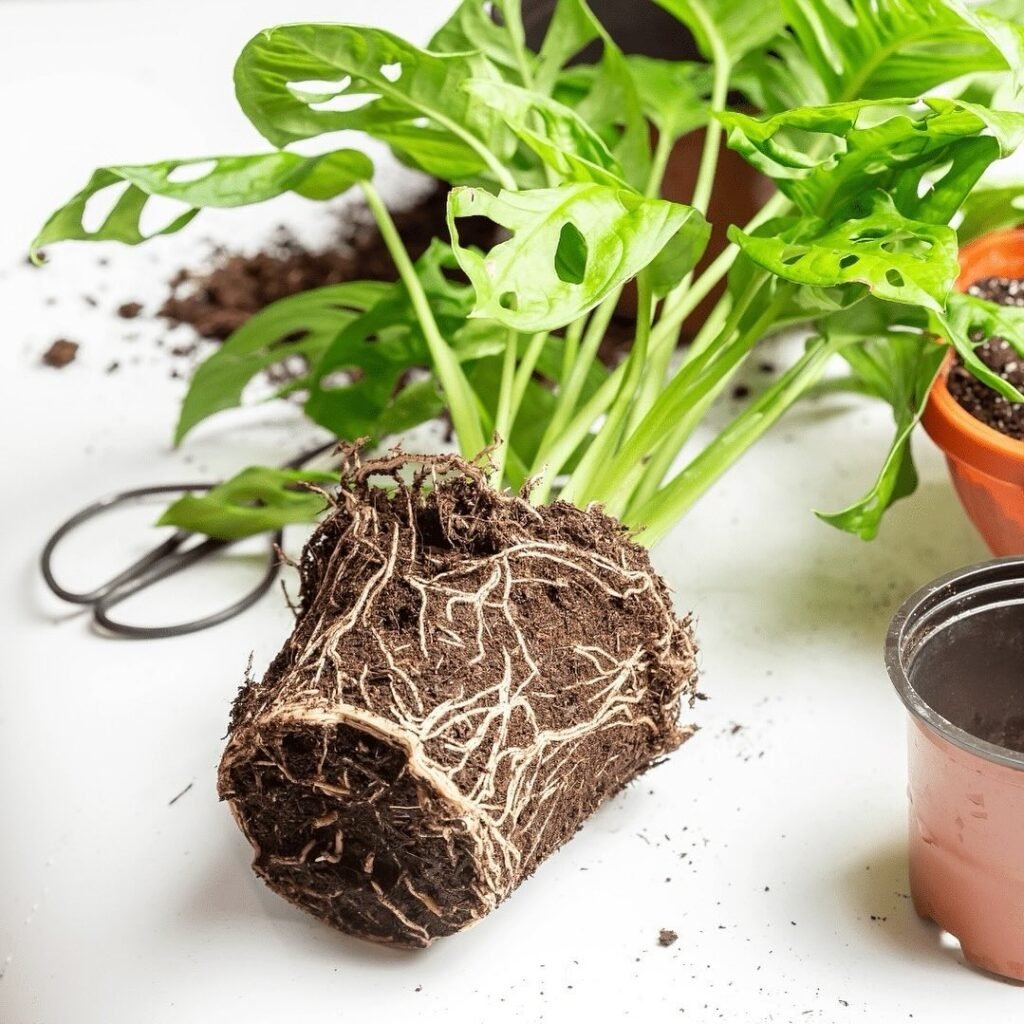
Monsteras thrive in well-draining, nutrient-rich potting soil. A good mix should contain ingredients like peat moss, perlite, and bark chips to ensure proper aeration and moisture retention. When potting or repotting your Monstera, choose a container with drainage holes to prevent waterlogged soil.
Fertilizing
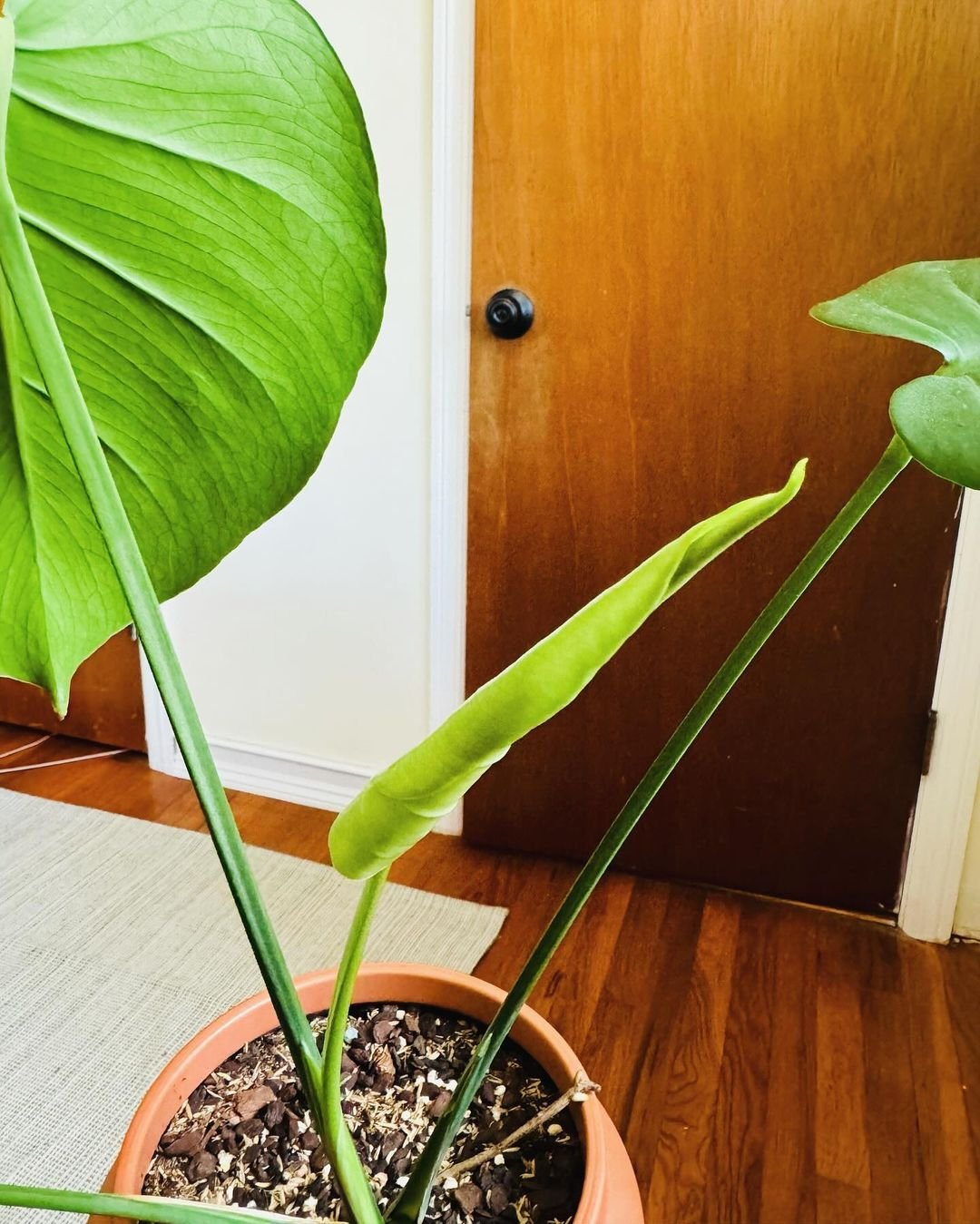
During the growing season (spring and summer), feed your Monstera with a balanced, water-soluble fertilizer every 4-6 weeks. This will provide the essential nutrients it needs to produce lush, healthy growth. In the fall and winter, reduce fertilizing or skip it altogether, as the plant enters a dormant phase.
Pruning and Training
Monsteras are naturally climbing vines, and their aerial roots can be used to attach the plant to a moss pole or trellis for support. Pruning is also recommended to maintain a desired shape and promote bushier growth. Simply snip off any damaged or overly long stems using clean, sharp pruning shears.
Common Monstera Care Challenges and Solutions
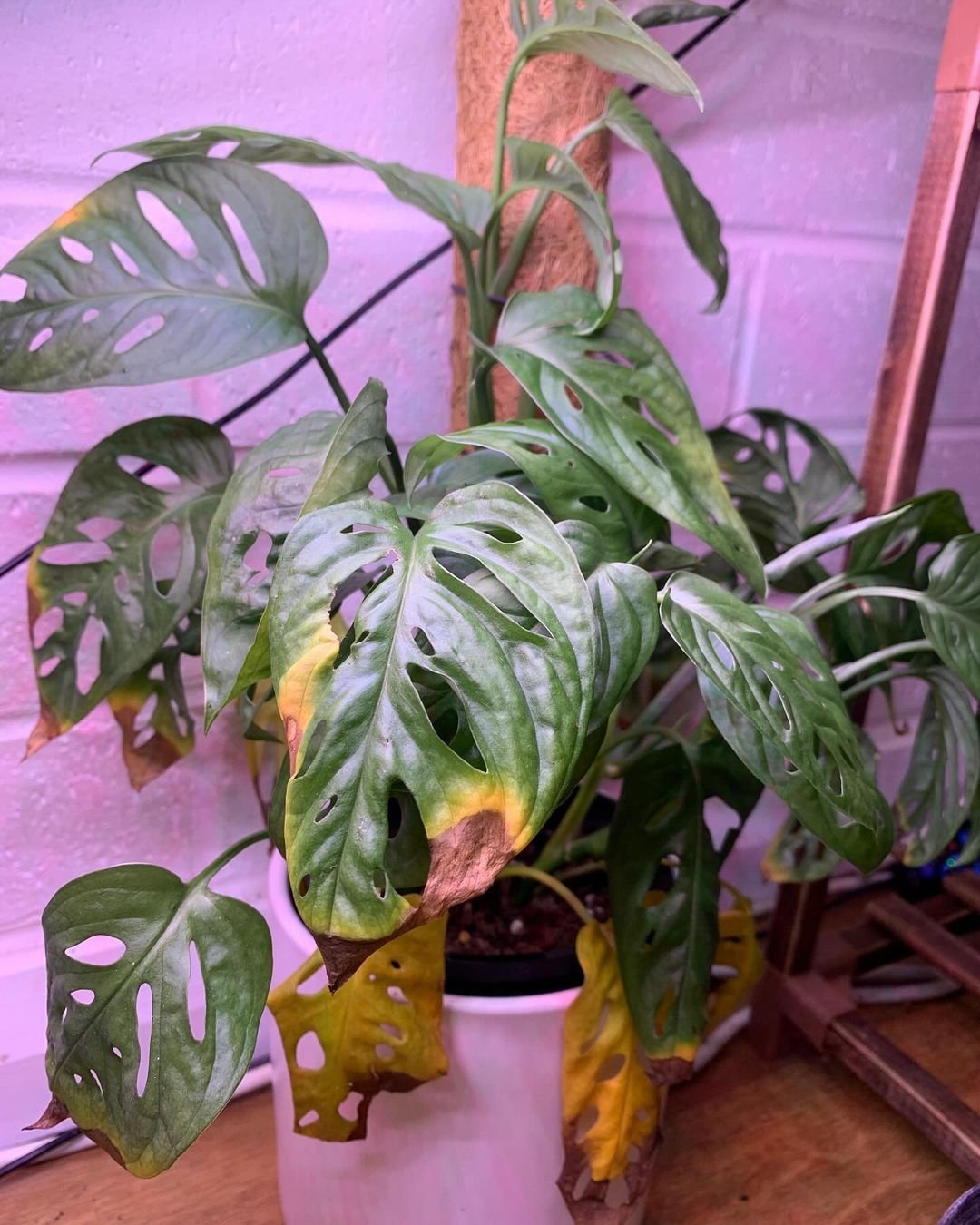
Yellow or Browning Leaves
If your Monstera’s leaves are turning yellow or brown, it could be a sign of overwatering, underwatering, or excessive direct sunlight. Check the soil moisture, adjust your watering schedule, and move the plant to a more suitable location if necessary.
Leaf Curling or Drooping
Curling or drooping leaves often indicate that your Monstera is thirsty or experiencing low humidity. Increase watering frequency and consider using a humidifier or pebble tray to boost moisture levels.
Pests and Infestations
Monsteras are generally resilient, but they can still fall victim to common houseplant pests like spider mites, mealybugs, and scale insects. Regularly inspect your plant for signs of pests and treat infestations promptly with an appropriate insecticidal soap or neem oil solution.
Lack of Fenestration (Leaf Holes)
If your Monstera isn’t producing those iconic perforated leaves, it could be due to insufficient light, overwatering, or immature growth. Ensure your plant receives adequate bright, indirect light and adjust your watering habits accordingly. Remember, fenestration typically occurs as the plant matures, so be patient with younger specimens.
Embracing the Monstera Trend
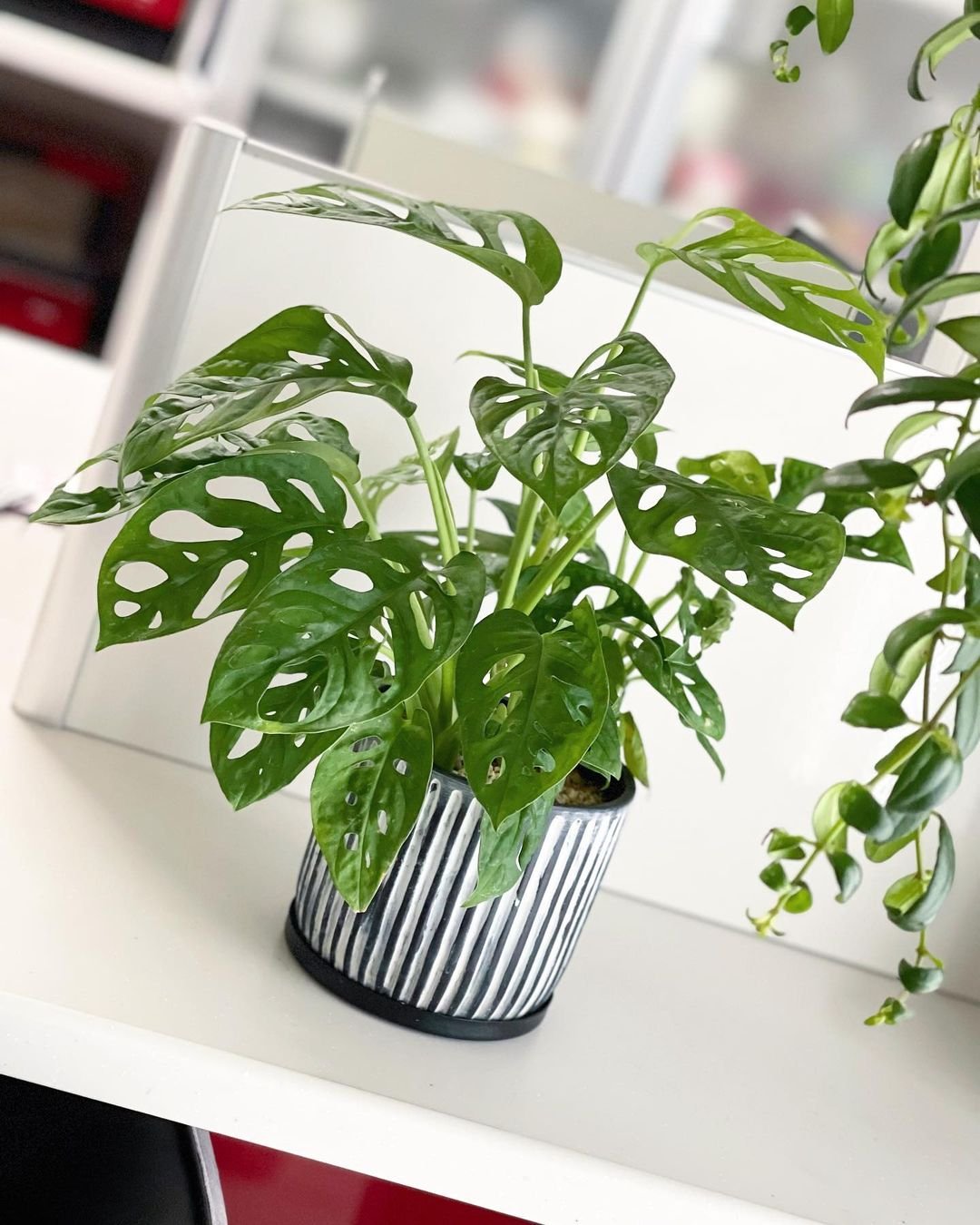
With their striking foliage and relatively low-maintenance requirements, it’s no wonder Monsteras have become a staple in modern home decor. These versatile plants can be incorporated into various design styles, from bohemian to minimalist, and can thrive in a variety of indoor settings.
Whether you’re a seasoned plant enthusiast or a budding green thumb, the Monstera deliciosa is an excellent choice for adding a touch of tropical flair to your living space. By following the care tips outlined in this guide, you’ll be well on your way to mastering the art of Monstera cultivation, ensuring your Swiss cheese plant remains a stunning and eye-catching addition to your home for years to come.
Pingback: Growing Monstera Deliciosa Fruit: A Comprehensive Guide